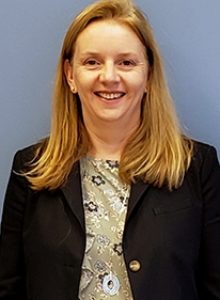Technology is an essential part of all of our lives. It can have a profound impact, whether allowing us to connect with family; reminding us to take medication; or keeping us safe at home, at work, or on the road. The coronavirus pandemic has only highlighted the centrality of technology for business and personal communication during endless months of at-home isolation. A recent Pew survey (McClain et al., 2021) indicated that nine out of ten Americans felt that internet technology was “essential” or “important” to them during the pandemic.

Providers of support for children and adults with intellectual and developmental disabilities (I/DD) were not, it must be acknowledged, early adapters. Our field must answer to federal and state agencies who regulate what resources are eligible for public funding, so despite the obvious value of interventions as simple as medication monitors, our use of technology lagged behind virtually every other sector. And while in recent years there has been a push for I/DD providers to explore technologies to provide quality services in more cost-effective ways, little to no funding is provided for the disability community to embark on such initiatives (Gupta, 2015).
YAI, which has provided comprehensive support for children and adults with I/DD since 1957, was no exception until 2019 when the agency sought an end to this particular “digital divide” by pursuing private foundation funding for a two-year pilot technology program. With the emergence of fifth-generation wireless broadband technology (5G) and the popularity of virtual assistants from Apple, Google, and Amazon, we recognized an opportunity to level the playing field and help the disability community to benefit from technological advancements.
In many neurotypical households, smart technology allows people to operate doors, phones, computers, and entertainment systems remotely. For people with cognitive or mobility disabilities, these technologies go beyond the realm of mere convenience and become lifelines to greater independence. Even people who need a great deal of support gain something of value from not needing help adjusting lighting or temperature. Some children and adults on the autism spectrum may have considerable prowess with digital technology, adapting to new platforms with ease and enthusiasm that far exceeds that of their parents and caregivers but benefit from some guidance in their day-to-day use.
Because YAI programs are built around a person-centered model, we wanted to learn how to give people with I/DD the technology that they wanted, not that we felt they needed. With lead support from the Stavros Niarchos Foundation (SNF) and additional support from Mother Cabrini Health Foundation, YAI created its Center for Innovation and Engagement, a technological hub to assess, design, implement, and evaluate innovative solutions for the everyday challenges faced by people with I/DD across YAI.
Beginning in January 2020, a small team of person-centered technology specialists hit the ground at YAI, conducting concurrent assessments with people we support and their circles of support, if required. The assessments include person-centered thinking tools, a technology readiness matrix, and a person-centered technology assessment (completed in conjunction with SimplyHome). Upon completion of these assessments, the specialists develop person-centered technology plans that include recommendations for the technological intervention(s) that will meet identified desires. Each specialist then works to install the technology and provide training on its use. At the six-month mark, each participant completes a survey that both informs the center whether the device is providing the expected level of independence and contributes to a data set that YAI will use to refine the program, pursue additional support, and ultimately, advocate with the State Office for People with Developmental Disabilities (OPWDD), our agency’s lead funder, to make some technology eligible for Medicaid reimbursement.
Although both the shutdown and related safety requirements during 2020 delayed the center’s launch, we are now well on our way to understanding the dimensions of independence that can be realized with smart technology. Many of the technological supports being used are retail items that can be purchased off-the-shelf. Others are more specialized, with applications that allow people with more significant support needs to access commonplace items like smart speakers and home hubs.
At the halfway mark, we have observed four primary categories into which technology is playing a new role: home, health, community, and safety. By way of illustration, these short examples provide a glimpse into the independence and quality of life improvements we have already observed:
Home: Jan has autism and visual impairments, so she needs significant support to navigate her world. After the assessment, she received a tablet, Echo Dots, and Flic buttons as part of her technology plan. The Dots are set up in various parts of the home and she can use Flic buttons to operate the Dots and play music that she finds calming. Several months into the pilot, Jan can now access those independently, dramatically decreasing her dependence on family members and giving her more control of her environment.
Community: Tyrone has had several falls at home and was anxious about being independent in the community. He received a smartwatch that will notify others if he has a fall. The smartwatch also allows him to send an alert to supports if he is feeling unsafe. Tyrone now feels comfortable going back out in the community and returning to his day program where he can really be himself.
Health: It is well known that the pandemic significantly impacted people’s ability to access medical providers, particularly if they lived in a home without a computer, tablet, or smartphone. The center helped equip people with tablets that allowed them to access telehealth and gain support with taking medications on time. Sam resisted any change in his routine until a specialist approached him about a medication dispenser. Since receiving this technology, he has not missed a dose and gets by without reminder phone calls from YAI staff every day. If Sam does miss a dose, a notification goes to his YAI community habilitation staff member.
Safety: Technology has also been provided to help alleviate anxiety for some people with autism. Mark was highly anxious about whether he had closed his apartment door after he left his home. At times, his anxiety would lead him to return home to check. Part of Mark’s technology plan included a door sensor and motion sensor which connects to his smartphone and notifies him if his door is open.
For everyone receiving support through the center, smart technology has led to increased independence and freed up staff or family caregivers for less routine and repetitive tasks. For example, a tablet using Google Action Blocks can allow a person to control their environment, turn on their television, and select content of their choice. For one participant, the specialist created an Action Block that allowed him to call his father in another state when he wanted to, not when someone was available to assist.
Glancing ahead, as YAI recognizes more and more uses for smart technology, direct support staff will benefit from a greater understanding of its value and practical lessons in its safe and productive use. We have enrolled select program staff in an enabling technology credential called Tech First Shift. Staff completing the 4-session training will become technology ambassadors, guiding their colleagues in day and residential programs on how to support others’ use of smart technology. The center also created an online database of tools anyone can use to demystify devices and ease people into using them.
Although we continue to gather and assess data from the initial months of this pilot, it is already clear that I/DD providers have only scratched the surface on the potential of smart technology to revolutionize our field, particularly at a time when attracting and retaining qualified staff is so difficult.
Judith Bailey-Hung, MA, is Coordinator, Behavioral Intervention Specialists and Supervisor, Center for Innovation and Engagement at YAI. For more information, visit www.yai.org/technology or contact judith.bailey@yai.org to learn more.
References
McClain, C., Vogels. E., Perrin, A., Sechopouos, S. & Rainie, L. The Internet and the Pandemic. https://www.pewresearch.org/internet/2021/09/01/the-internet-and-the-pandemic/
Gupta, S. (2015, February 2) For the disabled, smart homes are home sweet home. https://fortune.com/2015/02/01/disabled-smart-homes/
Shift Are You Ready for Technology Matrix- https://techfirstshift.com/






